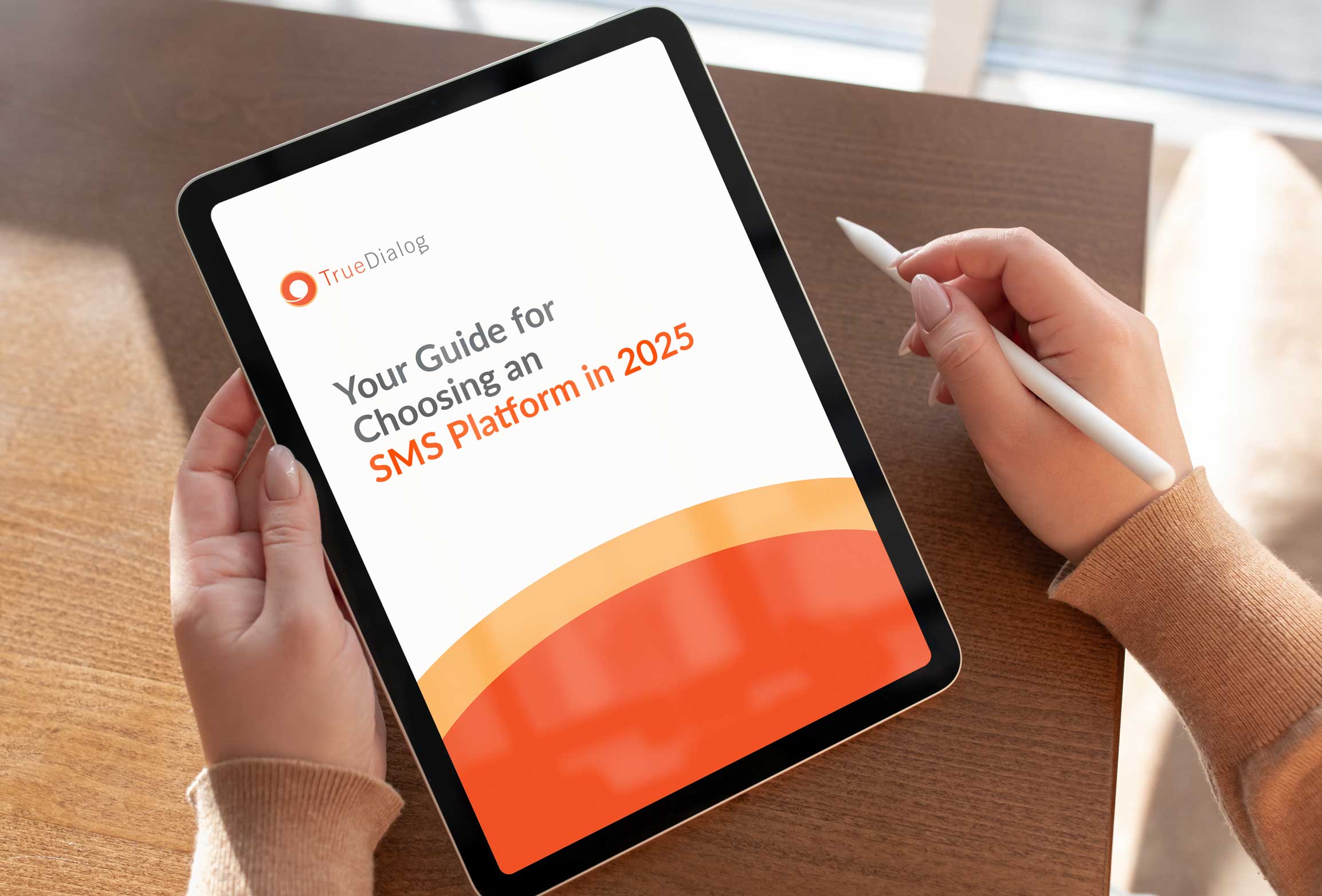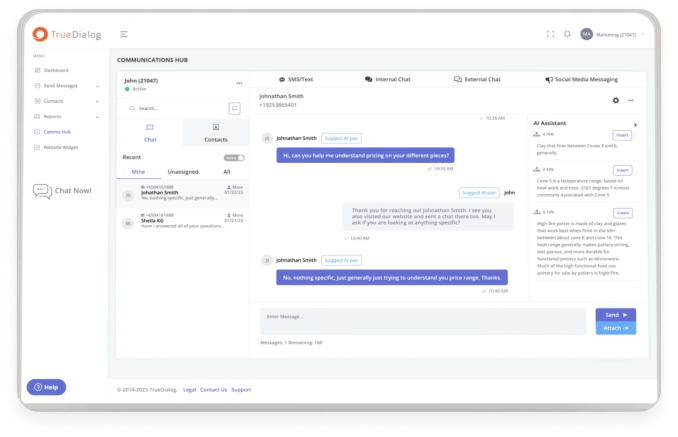Download TrueDialog’s Buyer’s Guide for Business SMS

SMS texting is a highly effective way to engage with customers, a critical part of a comprehensive communication plan. This Buyer’s Guide delivers helpful information you need to know when selecting a partner, including:
- Key advantages of SMS texting compared to other channels you may be using;
- Short codes (5 to 6 digits) and A2P 10 Digit Long Code (10DLC), including use cases;
- SMS Marketing Best Practices;
- Compliance and Opt-in/Opt-out requirements.
This guide contains valuable advice and tidbits when you first read it and can also serve as a follow-up resource as you proceed with SMS texting. Provide your contact information and download it today!

